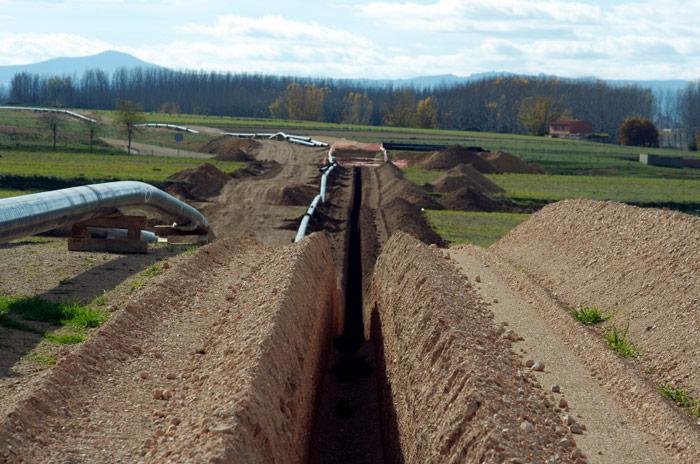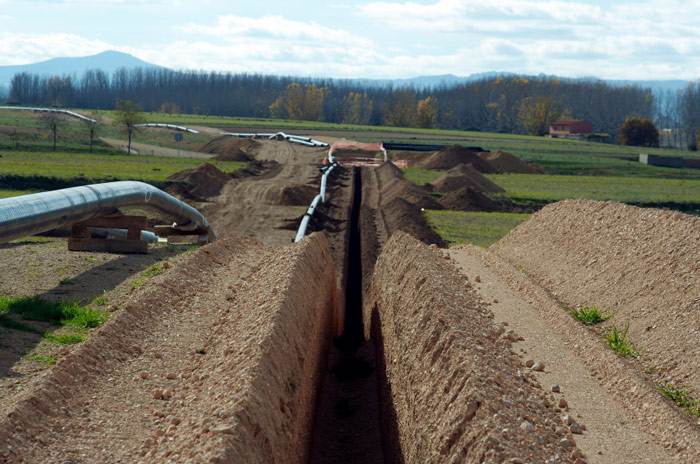Veresen Inc., a Canadian-based utility and natural gas, is currently proposing the construction of a liquid natural gas (LNG) export plant on Oregon’s West Coast. The project would include an updated LNG pipeline system, which would pipe gas into the plant for exportation to Asian markets.
The project is currently in the proposal phase. Veresen Inc.’s $5.4 billion project includes a facility near Coos Bay, Ore., that would liquefy domestic natural gas from a planed pipeline to be shipped via transport vessels overseas to China and India. The facility would be the West Coast’s first LNG export plant and would process about 1 billion cubic feet of gas per day.
Additionally, the natural gas pipeline utility Williams Companies Inc. will be constructing The Pacific Connector pipeline (PCGP). The PCGP will link existing pipelines at the Malin, Ore., hub near the Oregon/California border to Coos Bay.
“As the pipeline traverses southern Oregon, the PCGP route crosses or is located in the vicinity of existing natural gas infrastructure in several places,” Media Relations and Corporate Communication Spokesperson Michele Swaner told the Epoch Times. “The PCGP has the potential to give regional natural gas customers in Pacific Northwest market areas better access to domestic Rocky Mountain and Canadian supply basins.
A natural gas power plant poised to be built in the Jordan Cove region of Coos Bay, is in the 30-day notice period before it files its formal application for a permit with Oregon’s Department of Energy. The power plant would provide power to the nearby LNG exportation plant and has already been a great negative outcry from local opponents.
“It takes tremendous energy to cool natural gas,” said Jordan Cove spokesman Roy Hemmingway, according to The World news. “More energy than the local electricity grid can provide.”
However, this is the second proposal for a liquid natural gas plant to be built in Coos Bay. The original proposal for the project was issued in 2006 and included a plant that would import the LNG to domestic markets. With the recent market shift in LNG abundance due to improved shale drilling, domestic LGN prices are at a market low, thus making exportation very appealing to developers and investors.
Commodities exportation through the Pacific Northwest is nothing new. Coal exportation has been a consistent economic trend since foreign demand greatly increased over the last decade.
LGN developers as well as their partners and shareholders hope that exporting natural gas overseas will be just as profitable. Currently, Asian markets are demanding natural gas at four times the cost compared to its domestic price tag.
The current proposed timeline for the project, according to Swaner:
2012: Application filed with the Federal Energy Regulatory Commission
2014: Negotiations with landowners begin—planned for 1st through 4th quarters
2015: Construction begins on the pipeline—planned for 4th quarter
2017: In-service for the LNG terminal and pipeline—planned for 4th quarter
However, many local groups, individual citizens, and national environmentalist groups don’t want to see this project completed with natural gas, and like coal exportation, represents a potentially hazardous product that will be transported through sensitive ecosystems.
This past summer, four public meetings were held by the Federal Energy Regulatory Commission in response to the proposed plans developed by Veresen Inc. The Federal Energy Regulatory Commission oversees the Environmental Impact Statement (EIS), conducted to determine the environmental impact of the project.
At the meetings there were many local speakers who are against the project. Only 9 of the total 31 speakers supported the project. Supporters site economic factors in regard to project development. Currently, the Coos Bay median income is only about 75 percent compared to the rest of the state. Additionally, local unemployment statistics yield an 11 percent unemployment rate.
“There’s no work here unless you want to flip burgers, or some other minimum wage job,” said electrician Adam Foxworthy, according to Reuters.
“Those arguments now become arguments against the project for exporting our gas, said Coos County citizen and LGN plant opponent Holly Stamper, referring to the 1,123-page EIS import plant plan calling for more domestic natural gas, according to Reuters.
“On average, both the pipeline and terminal will employ 1,800 people per year during construction,” continued Swaner. “There would also be regional benefits to the economy during operations, including: 100 direct jobs; 51 indirect jobs (sheriff deputies, firefighters, tug boat crews and planners); 400 other indirect jobs; and 180 induced jobs.”
The Coos Bay area is home to one of the nation’s densest forests and was a major logging region until a few decades ago. Many endangered species inhabit the area including the northern spotted owl.
Many anti-LNG plant locals fear any number of catastrophes, which could cause hazards to the area, including earthquakes, tsunamis, spills, chemical leaching, and so on.
“It’s newer here. People are not accustomed to it,” said Bill Vander Lyn of Williams Cos Inc., referring to the coal/LGN exporting industry, according to Reuters. “That’s the difficulty.”
The Epoch Times publishes in 35 countries and in 19 languages. Subscribe to our e-newsletter.






